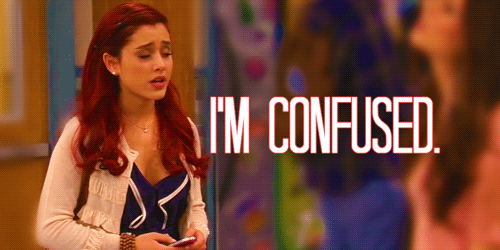Sofia Speculates is the official name for all of the times Sofia just NEEDS to ramble on and on about whatever topics suit her fancy at the moment. Check out my review of The Unfinished Life of Addison Stone by Adele Griffin, the book that inspired this discussion.
What do you think of when you see a picture in the book you are reading? This may be a photograph, a drawing, a computer-generized image, a nifty photoshop-made graphic.
Back when you were a child, finding a picture in a book meant that it was a picture book, plain and simple. A book where the artwork was clearly done by someone and is paired with the text to form a complete story that would usually be labeled as a Children's Book. Not that there is a single thing wrong with reading a book with pictures (I love them for that matter), but when you were younger it was SUCH a big deal when you had graduated BEYOND the books with pictures.
 |
| *Cue Valley Girl Voice* Like Seriously.... You don't even know ho big of a deal it was to read a "Chapter Book" |
But what do we do as readers when we come across books with PICTURES in them that ARE NOT from the Children's Section?
There are many multi-media books, more specifically, full-length novels thats stories are enhanced with "pictures" essentially. They're still regarded on the same level as all other books like it, but sometimes the presence of pictures confuses readers a bit.
The way I see it, there are a three different sub-genres and/or categories of books with "pictures" in them present in Young Adult literature.
First up, we have the classic non-fiction memoir where the presences of pictures - more precisely, photographs - are a little more widely accepted because to be frank, it's helpful for readers to see photos of whatever event in a person's life is being talked about. In modern memoirs, images have almost come to be expected, mostly to break up all of the text which may be fascinating to some people to reader about other's lives or extremely boring in another reader's perspective.
Then we have the full-length novels with a combination of drawings and/or photographs in them to ENHANCE the act of story-telling. They're exactly like any other YA novel you can pick up off the shelf and the book could be read without much difficulty, had the pictures been removed. Yet there's a reason why these pictures are present. For Winger and The Absolutely True Diary of a Part-Time Indian, little comics/doodles are interspersed through the novels to add comedic relief and in both stories, the narrators have a passion for drawing and the readers get a glimpse of their talent with the addition of pictures. On the other hand, Amy & Roger's Epic Detour has a gritty, "this is real life" feel to it, and the photographs provide some "proof" if you will of the character's experiences and journeys.
Lastly, we have the novels where pictures and text are completely intertwined and necessary for the reader's enjoyment. Every You, Every Me was actually written section by section as Jonathan Farmer brought David Levithan photographs and the entire story is weaved into them. Asylum and Miss Peregrine's Home For Peculiar Children are both horror novels with photographs that add to the creepiness factor and are essential for the story. And then there's The Unfinished Life of Addison Stone about an art prodigy, so photographs of her actual artwork as well as ones of her are interspersed throughout the novel.
The fact that there are graphics in these books do not diminish their value as stories, or make them "Children's" books, or make them Graphic Novels for that matter.
Now that we know a little more about pictures in Young Adult novels, let's talk about how images enhance story telling. Everyone loves an author that can paint the most brilliant picture ever of what's going on during a certain scene. Sometimes, as readers, we just can't picture whatever the author is attempting to describe. Multi-media novels add a whole other level to the reading experience and are quite enjoyable when done right.
There actually haven't been many Young Adult multi-media books that have been hyped up (besides Miss Peregrine's Home For Peculiar Children). This is a completely personal projection from my perspective as an adolescent growing up in the 21st century, but I predict that there will be a lot more multi-media books in the next few years merely because of how much people are attracted to images and the different experience multi-media books bring to the table.
Another quick point I would like to bring up is just because I enjoy reading a multi-media novel does not mean that I don't enjoy books that are made completely of words and it would be the most horrendous day in history if those kinds of books were eradicated. I just wanted to bring up the topic of multi-media novels to hear your opinion.
So what do you think?
Where are we going the genre of multi-media literature?
What are some multi-media books you would recommend?







No comments:
Post a Comment